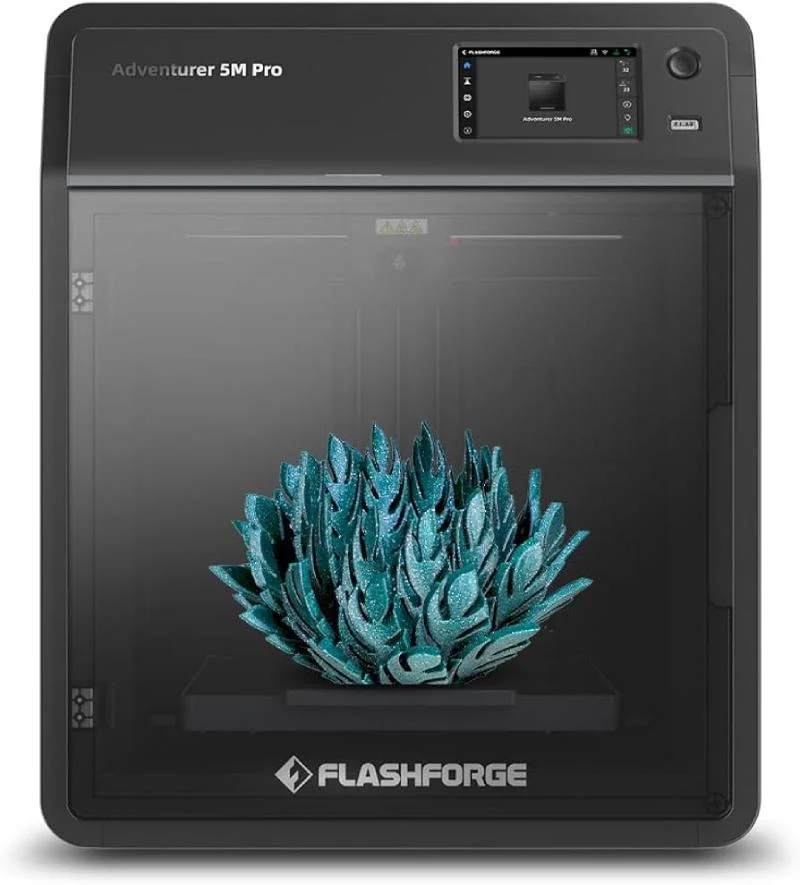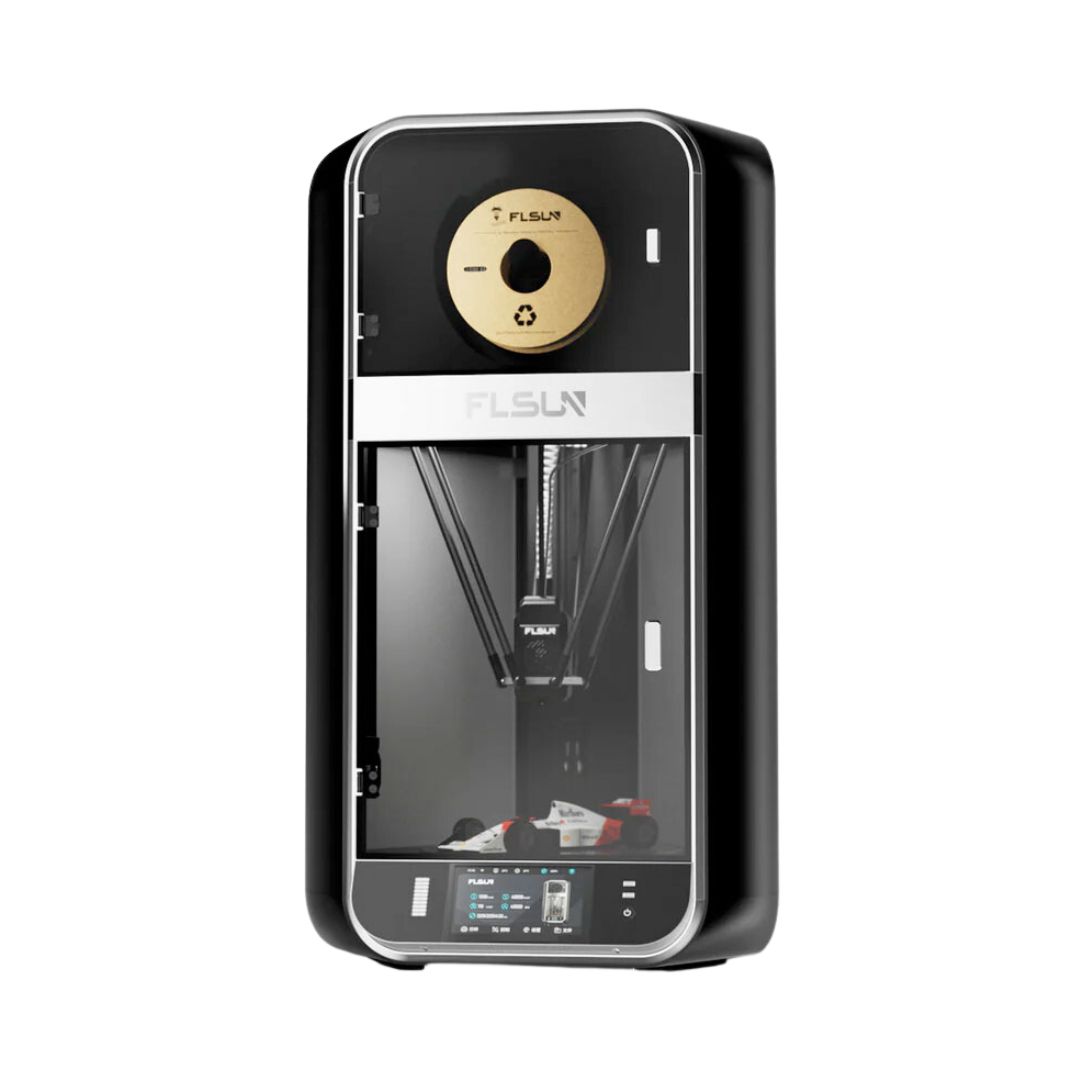Compare Adventurer 5M PRO vs S1 PRO
Comparison between the best 3D printers
Choose the best 3D printer at the best price. The cheapest 3D printers are here.
Buy a 3D printer here with 3D Fila.
 |
 |
|
| Model | Adventurer 5M PRO |
S1 PRO |
| Printing Material | Filament | Filament |
| Buy Filament for Flashforge Adventurer 5M PRO | Buy Filament forFLSUN S1 PRO | |
| Estimated price | $599,00 | $1500,00 |
| Manufacturer | Flashforge | FLSUN |
| Release Year | 2023 | 2024 |
| Print Volume [mm] | 220x220x220 | 320x320x430 |
| Printer Size [mm] | 380x400x453 | 450x450x1200 |
| Weight [kg] | 10,8 | 41 |
| Power Loss Recovery | YES | YES |
| Enclosed printer | YES | YES |
| Bed Leveling | Automatic | Automatic |
| Filament End Sensor | YES | YES |
| Bed type | Heated | Heated |
| Power supply system | Direct Drive | Direct Drive |
| Standard nozzle | 0,4 | 0,4 |
| Maximum Nozzle Temperature [°C] | 280 | 350 |
| Maximum Bed Temperature [°C] | 110 | 120 |
| Maximum printing speed [mm/s] | 600 | 1200 |
| Filament holder | YES | YES |
| Camera for supervision | NO | NO |
| Recommended filaments | PLA, PETG, TPU, PLA-CF, PETG-CF | PLA, PETG, TPU, ABS, ASA, Nylon, PC, PP, HIPS |
| Recommended slicers | FlashPrint 5 | FLSun Slicer 2.0, Orca Slicer |
| Maximum Resolution [mm] | 0,1 | 0,01 |
| Processor | ||
| Display | Touchscreen 4,3'' | Touchscreen 7'' |
| Power Supply | 350 W | 500W 110-240V, 50/60HZ |
| Connectivity | Wifi / Ethernet / USB | Wi-Fi, USB, app FL Sun World |
| Operating systems | Windows, Linux, Macbook | Windows, Mac |
| Date of registration in the system | 2024-07-09 | 2024-12-16 |
| Release date | 2023 | 2024 |
| Extra features | The Flashforge Adventurer 5M PRO features advanced features such as a CoreXY motion system, direct drive extruder, print speeds of up to 600mm/s and maximum acceleration of 20,000mm/s². It features fast nozzle changes, automatic calibration, active vibration compensation, camera monitoring, time-lapse video, HEPA and carbon filters for particles and VOCs, and an intuitive 4.3-inch touchscreen interface. Ideal for printing materials such as PLA, PETG, ABS and TPU. | The FLSUN S1 Pro is a high-speed Delta 3D printer, reaching up to 1200 mm/s with 40,000 mm/s² acceleration. It features a build volume of 320 mm (diameter) x 430 mm (height), a 350°C hotend, dual-zone heated bed up to 120°C, a 50°C heated chamber, and an active filament drying holder. It includes a camera for remote monitoring, integrated UPS for power-loss safety, a HEPA filter, and a 7 touchscreen interface. Perfect for large and complex projects. |
| Support for multiple colors and materials (AMS and CFS) | NO | NO |
Notes * |
||
| Cost-benefit | 7 / 10 | 7 / 10 |
| Hardware | 4 / 10 | 5.4 / 10 |
| Tela | . | . |
| Print volume | 3 / 10 | 4 / 10 |
| Performance | 5 / 10 | 9 / 10 |
Conclusion |
| ### Conclusion When comparing the Flashforge Adventurer 5M PRO and the FLSUN S1 PRO, several key differences emerge that can influence a potential buyer's decision. The **Adventurer 5M PRO**, priced significantly lower, offers a compact build volume suitable for smaller projects. Its features, such as automatic bed leveling, a heated bed, and direct drive extruder, make it a strong contender for users who prioritize ease of use and reliability for basic materials like PLA and PETG. Despite having a slower maximum print speed and lower resolution compared to its competitor, it provides solid value for hobbyists and smaller-scale operations. On the other hand, the **FLSUN S1 PRO**, being the more expensive option, boasts a larger print volume and higher maximum speeds, catering to advanced users or businesses that require efficiency and capability for larger or more complex prints. Its advanced features, like a dual-zone heated bed and ability to handle a wider variety of filaments, position it as a robust solution for professional-grade applications. Both printers come equipped with essential safety features such as power loss recovery and automatic filament sensors, which enhance their usability. While both models achieve a similar cost-benefit score, the S1 PRO stands out in hardware performance, making it better suited for professional users. In contrast, the Adventurer 5M PRO remains a reliable and cost-effective choice for entry-level enthusiasts. Ultimately, the choice between these two models should align with the user’s specific needs for size, speed, and material versatility, balanced against their budget constraints. |

